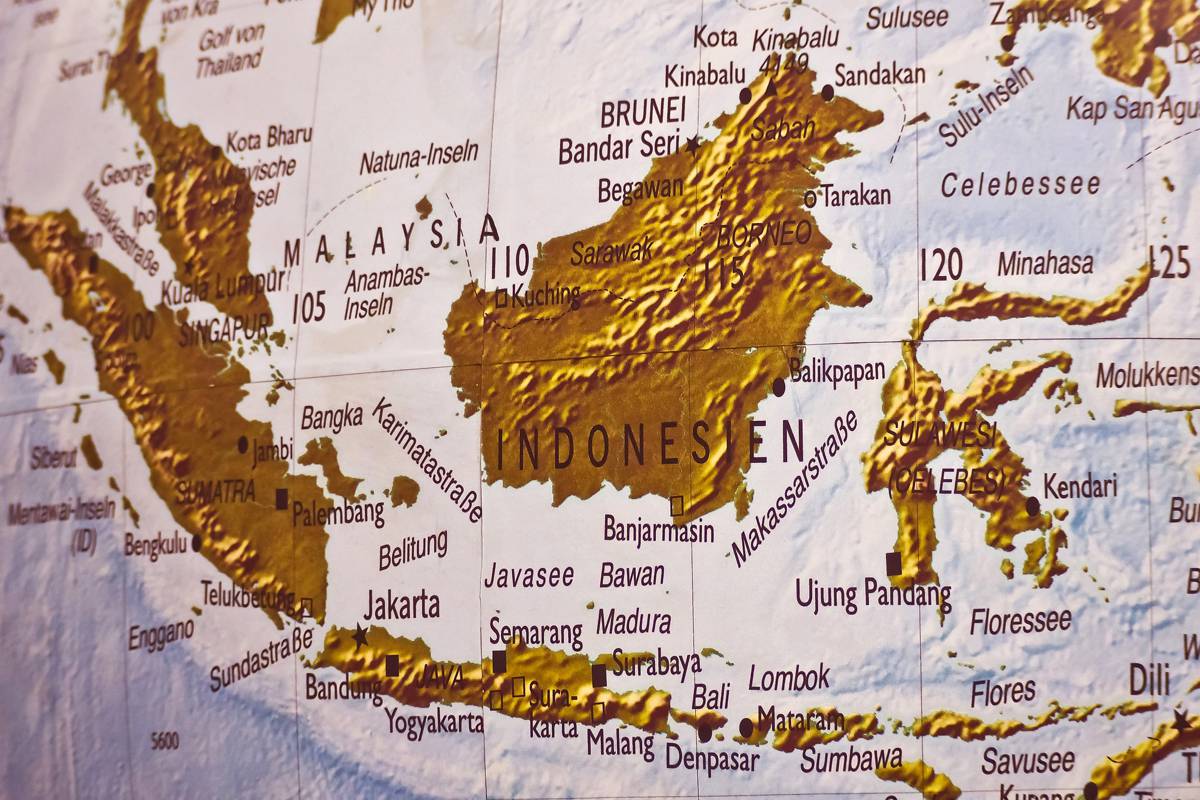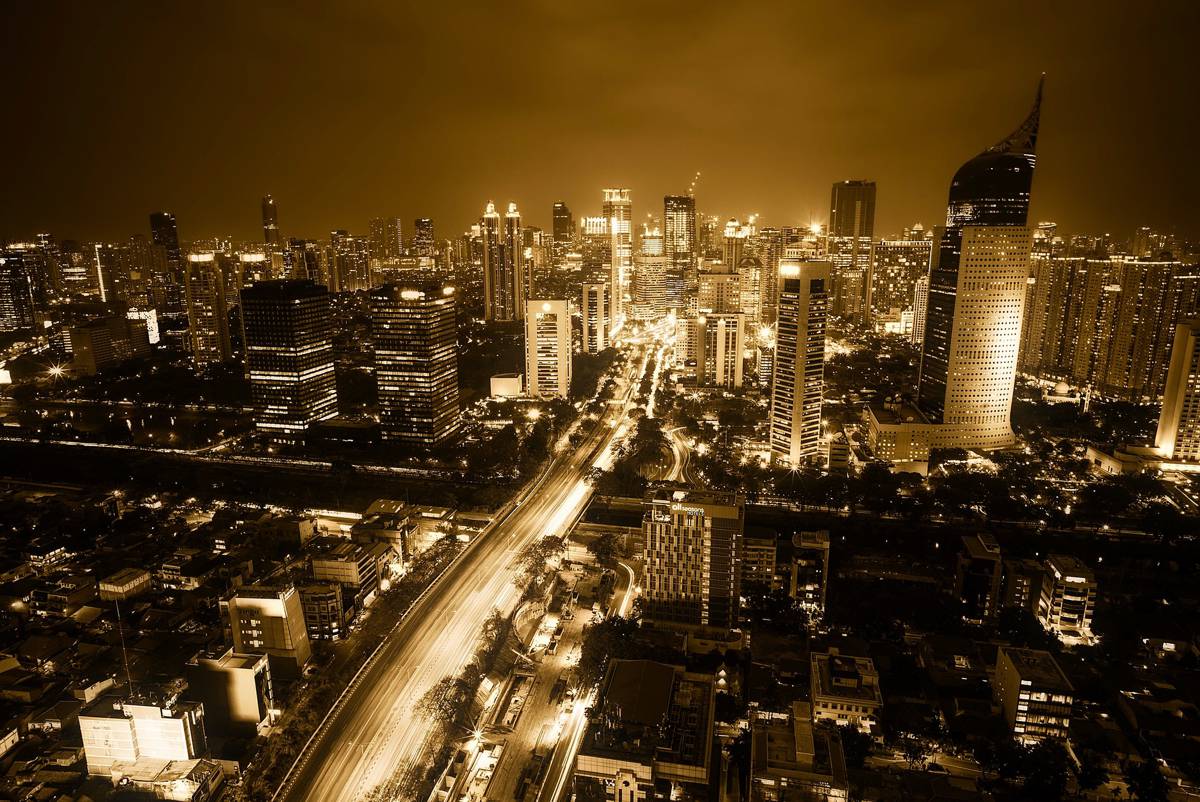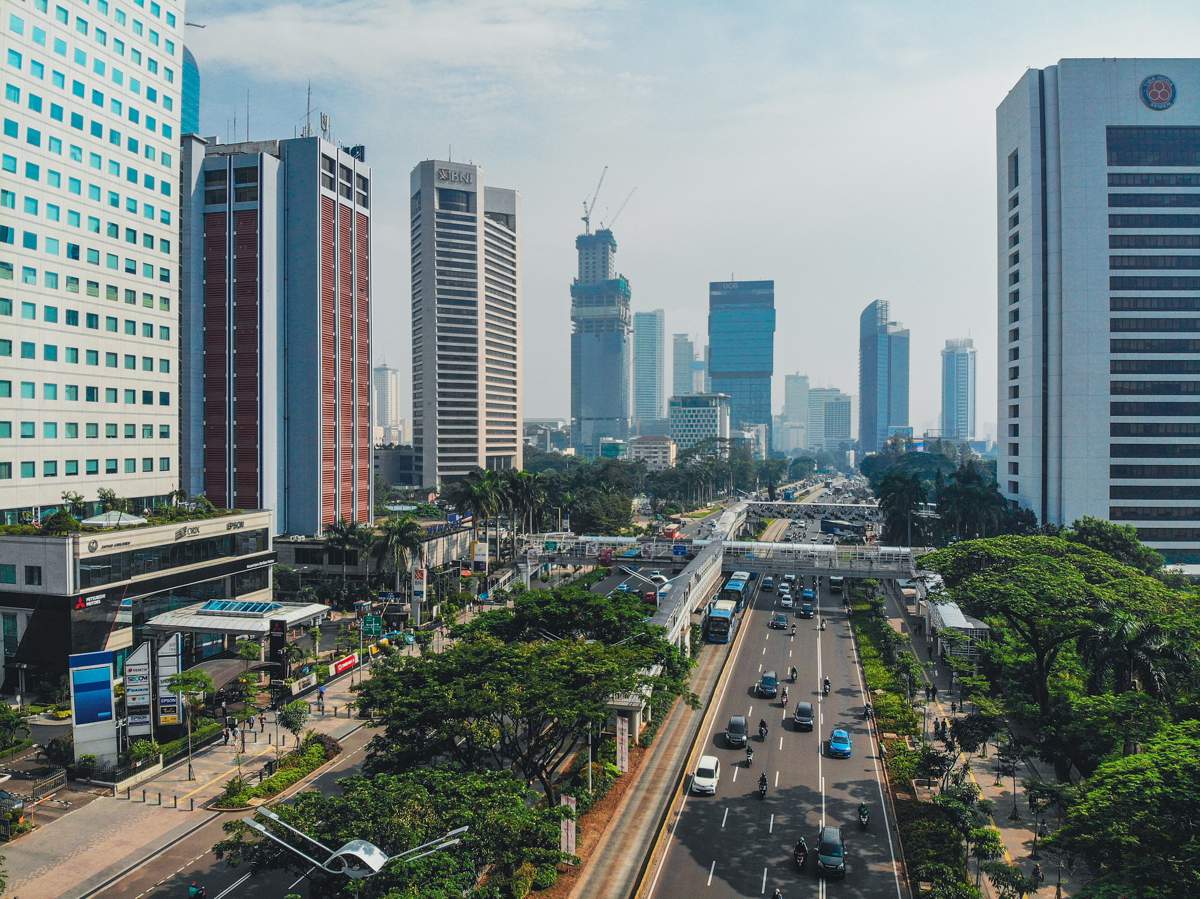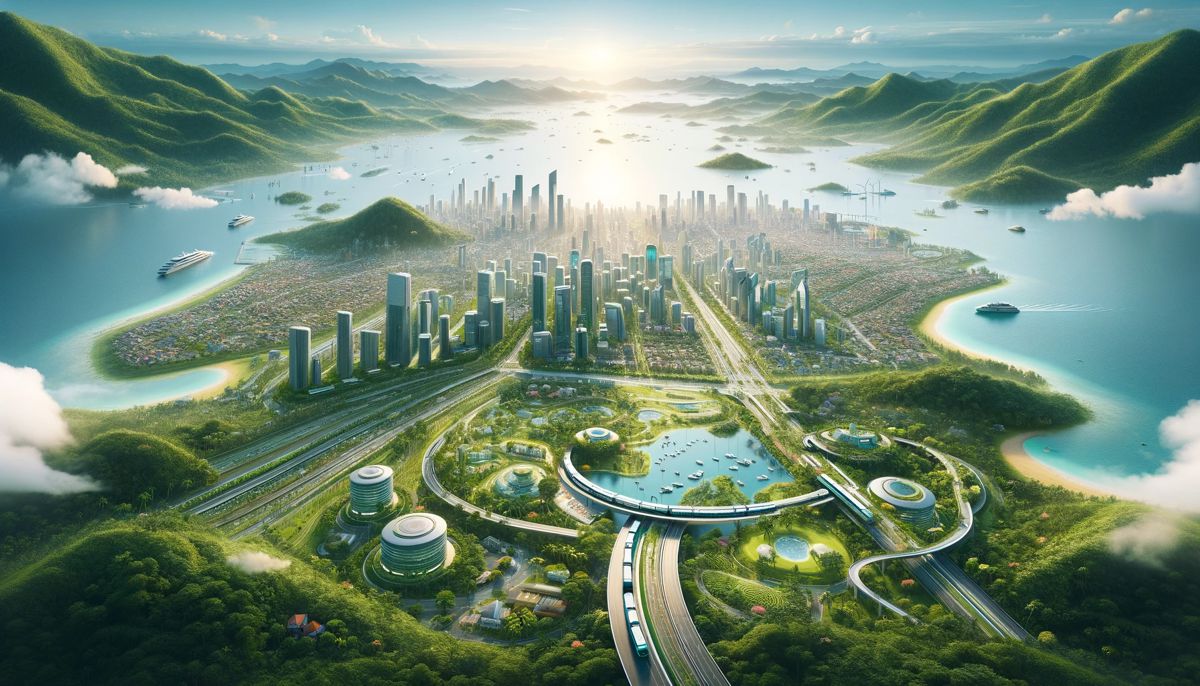Indonesia’s vision for their new capital city of Nusantara
The vision of Nusantara, the future capital of Indonesia, set for inauguration on 17 August 2024, is not just an urban development project but a bold statement of Indonesia’s commitment to sustainable urbanization.
The decision to relocate the capital from Jakarta to East Kalimantan on Borneo island is rooted in a blend of economic, environmental, and geopolitical considerations.
Geopolitical Significance and Urban Planning
Nusantara’s location on the east coast of Borneo, an area relatively free from earthquakes, tsunamis, and volcanoes, offers significant geopolitical and environmental advantages.
The city, covering 2,560 km², is designed to integrate with its natural environment of hilly landscapes, forests, and a bay, showcasing a harmonious blend of urban development with natural preservation.

Financial and Construction Magnitude
The project, with an estimated value of Rp 523 trillion (US$35 billion), represents a colossal undertaking in both financial and construction terms. The multi-phase construction process, involving a vast workforce, requires meticulous financial planning and management.
The initial phase focuses on key government infrastructure, indicating the scale and complexity of the project’s construction needs.
Challenges in Financing and Investment
Financing Nusantara is a complex puzzle. The withdrawal of major investors like Japan’s SoftBank Group has highlighted the challenges in securing stable and substantial investment.
The Indonesian government’s commitment to sourcing international investment underscores the need for a multi-faceted financing strategy that balances state funds, public-private partnerships, and foreign investment.

Comparison with Global Capital City Projects
The concept of constructing new capital cities isn’t unique to Indonesia. Globally, there are several examples, each with its lessons:
- Brasilia, Brazil: Inaugurated in 1960, Brasilia was constructed to move the capital from the coastal Rio de Janeiro inland. While it succeeded in some development goals, it also led to increased segregation and did not fully decentralize Brazil’s population.
- Naypyidaw, Myanmar: Established in 2005, Naypyidaw replaced Yangon as Myanmar’s capital. Despite its impressive infrastructure, the city has faced challenges in attracting residents and businesses, leading to perceptions of it being a ‘ghost city.’
- Astana (now Nur-Sultan), Kazakhstan: Moved from Almaty in 1997 for strategic and developmental reasons, Astana has seen significant growth and development, becoming a symbol of Kazakhstan’s post-Soviet era.
- Abuja, Nigeria: Replacing Lagos in 1991, Abuja was designed to be more centrally located. However, it has struggled with rapid urbanization, leading to housing challenges and the growth of informal settlements.
These examples highlight the diverse outcomes of relocating national capitals, underscoring the importance of careful planning and implementation in the Nusantara project.
Environmental and Social Implications
The environmental impact of constructing a city within a biodiverse rainforest is a major concern.
The project necessitates a delicate balance between development and conservation, with a focus on sustainable practices to protect local ecosystems and communities.

Transportation and Urban Connectivity
The transportation plan for Nusantara is ambitious, aiming for 80% of mobility to be supported by public transport, cycling, or walking.
This includes a comprehensive public transportation network with a metro system, bus rapid transit, and autonomous minibuses, along with a robust infrastructure connecting Nusantara to neighbouring cities.
Cultural and Historical Context
The choice of the name ‘Nusantara’, reflecting the nation’s archipelagic identity, is steeped in cultural and historical significance. This name embodies Indonesia’s diverse heritage and symbolizes the unity of its many islands.

A Paradigm of Urban Development
Nusantara stands as a testament to Indonesia’s vision for the future – a sustainable, well-planned city that balances urban development with environmental stewardship.
As construction progresses, the world watches with keen interest, as Nusantara has the potential to become a benchmark for future global urban development projects.
Its success or failure will offer valuable lessons in sustainability, urban planning, and strategic development for countries around the world.



















